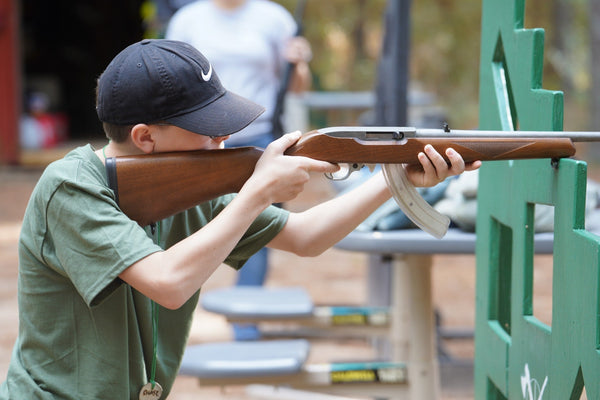Stay Safe on the Road: 7 Warning Signs to Watch for While Traveling with Your Family
Summer road trips should be about adventure, not danger. But traveling through unfamiliar areas can make you a target if you're not aware of your surroundings. Criminals prey on unsuspecting tourists, and the best way to avoid becoming a victim is staying alert and recognizing early warning signs. Here are 7 key red flags to watch for—along with pro tips to keep your family safe on the road.
1. Vehicles Staged on the Side of the Road
A common tactic criminals use is staging a "disabled" vehicle on the roadside, often with the hood up or hazard lights on. They may appear to need help but could be setting up a distraction, ambush, or carjacking—especially in isolated areas.
Pro Tip: Avoid stopping unless it’s a true emergency. If you see a stranded vehicle but feel uneasy, call roadside assistance or 911 from a safe distance instead of pulling over. If someone tries to flag you down in a remote area, stay in your locked car and keep moving unless it's clearly a life-threatening situation.
2. Strangers Acting Too Helpful
Overly friendly strangers offering unsolicited help—especially at gas stations, rest stops, or parking lots—could be setting up a distraction while an accomplice targets your vehicle or belongings.
Pro Tip: Politely decline help unless you requested it. Keep valuables locked inside your car and be mindful of your surroundings when loading or unloading.
3. Cars Following You for Long Distances
If the same car remains behind you for miles, especially making the same turns or exits, it could be a sign you’re being followed.
Pro Tip: Don’t go to your hotel or final destination right away. Instead, drive to a police station, fire station, or well-lit, crowded area to confirm whether the car continues to follow. If so, call authorities.
4. Individuals Lurking at Rest Stops
Rest areas are common locations for vehicle break-ins, robberies, and even abductions. If someone seems to be hanging around aimlessly or watching travelers too closely, stay on high alert.
Pro Tip: Park in well-lit areas near other families or groups. Keep your doors locked while inside the car, and avoid stopping at desolate or poorly maintained rest areas.
5. Someone Bumping Your Car on Purpose
A minor "accident"— like a rear-end tap or side mirror bump—could be a setup to get you out of your car. Criminals use this tactic to carjack or rob unsuspecting drivers.
Pro Tip: Stay in your vehicle with the doors locked and windows up. If the situation feels off, signal that you’re calling 911 rather than exiting your car.
6. Suspicious Flyers, Cloths, or Zip Ties on Your Car
Some criminals use distractions like flyers under your wipers or clothes tied to your side mirror to delay you in a parking lot while they approach.
Pro Tip: Ignore and drive away first. If you notice something unusual on your car, do not stop to remove it in a secluded area—drive to a safe place before addressing it.
7. Strangers Asking for Directions or Help Too Close to Your Car
Criminals sometimes approach a parked vehicle, knock on the window, or claim to need directions—only to use this as an excuse to get close and attempt a carjacking.
Pro Tip: Do not roll down your window for strangers. If someone approaches, keep your engine running, and if you feel uncomfortable, drive away immediately.
Final Thoughts: Stay Aware, Stay Safe
Crime thrives on opportunity, and criminals target distracted and unprepared travelers. By recognizing these red flags and following these pro tips, you can dramatically reduce your chances of becoming a victim while keeping your family safe. Before you hit the road, take a moment to discuss these safety tips with your family. Awareness and preparation are your best defenses!
Also in BLOG

Top 8 Pro Tips for Your Family’s Bug‑Out Vehicle
Selecting the ideal urban family “bug‑out” vehicle (BOV) requires balancing storage, off‑road prowess, fuel range, reliability, maintenance ease, power/communications, seating comfort, and customization potential. Each feature ensures you can evacuate swiftly, carry essential gear, stay powered and informed, and keep your family safe and comfortable—all while adapting your rig for the unpredictable urban environment. Below are the eight critical features, each paired with a Survivalist Pro Tip.

7 Reasons the Ruger 10/22 is the Ultimate Starter Rifle (with Pro Tips!)
The most common question received by firearm trainers is "What's the best rifle to start with?" The answer? The Ruger 10/22. This iconic .22 LR semi-automatic rifle is a staple in the shooting community, and for good reason. Whether you're introducing a friend to the sport or looking for a reliable plinker, the 10/22 delivers. Here are seven reasons why it's the perfect choice, each paired with a pro tip to enhance your shooting experience.

Lost in the Wild: Avoid These 5 Fatal Mistakes
When you find yourself unexpectedly lost in a survivable wilderness setting, your chances of survival depend as much on your mindset as on your gear. Modern survival experts have seen it all from hikers who panic at the first sign of trouble to those who make impulsive decisions that cost them dearly. Here are the top 5 fatal mistakes people make when lost, and advice to help you avoid them.
